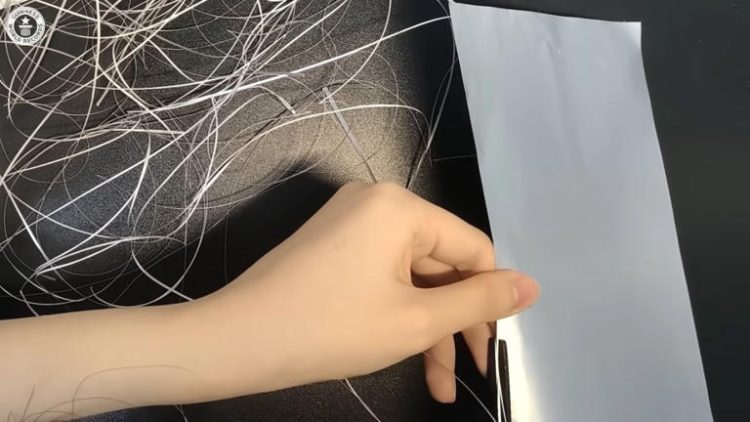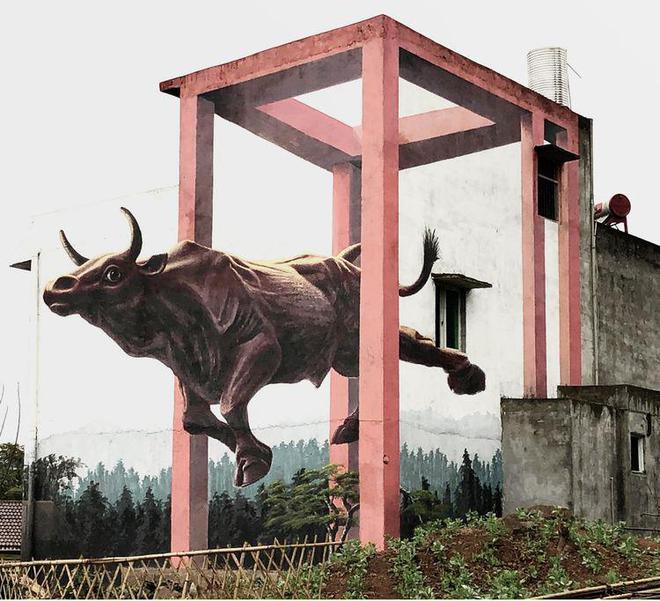Demolishing sand castles can be great fun. But what if you had spent weeks creating it painstakingly, only to have it destroyed at the end? Heart breaking, isn’t it? But for the monks of Tibet who create exquisite sand paintings, dismantling their work is the only way. This is said to signify the impermanence of life.
Sand Mandala, the art of creating intricate artworks using colored sand, is practiced by Tibetan monks as a part of tantric tradition. In the Tibetan language, the art is called dul-tson-kyil-khor (mandala of colored powders). As a part of the sand mandala, millions of sand grains are laid painstakingly into place on a flat platform. Several monks work on a single piece, which can take days or weeks to complete. The word Mandala means ‘circle’ in Sanskrit and is said to represent the cosmogram of a Buddha or bodhisattva. This could be the monk’s own, or of the one he wishes to appease. The art includes geometric figures and several Buddhist spiritual symbols. A sand-painted mandala is used as a tool for blessing the earth and its inhabitants. It also provides the monk who practices the art a visual representation of the enlightened mind of the Buddha.

Photo: San Jose Library
A typical sand mandala consists of an outer ring, inside which is a smaller square representing the ‘celestial palace’, a dwelling place of the deity. This square has four gateways representing each of the four directions. The circle as well as the square is made with several intricate layers. The square contains yet another circle, divided into 9 sectors. This circle might just repeat the pattern outside, or the central sector may contain the deity itself. If this is the case, the deity’s manifestations are represented in the surrounding sectors. Sometimes, the whole pattern may be contained within a square, with each of its corners repeating the pattern in smaller mandalas.

Photo: San Jose Library
The Tibetan mandalas are deceptively simple. They might look like they’re made up of basic patterns, but are extremely complex and might take weeks to complete. Buddhist monks undergo years of training before they can make a mandala. Since the ritual is considered to be very sacred, it cannot be done on a lighter vein. So before a mandala is made, a monk will spend time in philosophical and artistic study. Once a level of understanding has been reached, the mandala is created. In the personal monastery of the Dalai Lama, the Nyamgal monastery, monks spend about three years studying before making the mandala.

Photo: Josh Simerman
Traditionally, four monks work on a single mandala, each taking one of the four quadrants. Each of these four monks has an assistant to fill in their detailed outlines with colors. All the monks begin work on the mandala from the center, moving outwards. Balance is maintained by waiting for all the monks to complete their sections, before moving on to the next. But even before they can start their sand work, the monks perform an opening ceremony. Then, a chalk is used to make a blueprint of the mandala, starting with a single dot at the very center. Four lines are drawn from this dot, after which each monk will work in his own quadrant. The blueprint is completed, the outlines filled with colored sand, made from crushed white stone and dyed. A serrated, funnel-like device is used for the application of the sand, known as chakpu. Two chakpus are scraped against each other, producing a vibration that releases sand onto the blueprint.

Photo: Wonderlane
But what is most unique about the Tibetan sand mandalas is that they are destroyed after completion. The monks work methodically on this as well, brushing off the sand, pushing it all towards the center of the platform. The entire process is undone, and the sand is poured into the nearest body of water. This action is meant to teach us not to get attached to earthly objects, and symbolizes the impermanence of all things material.

Photo: Zlatko Unger













